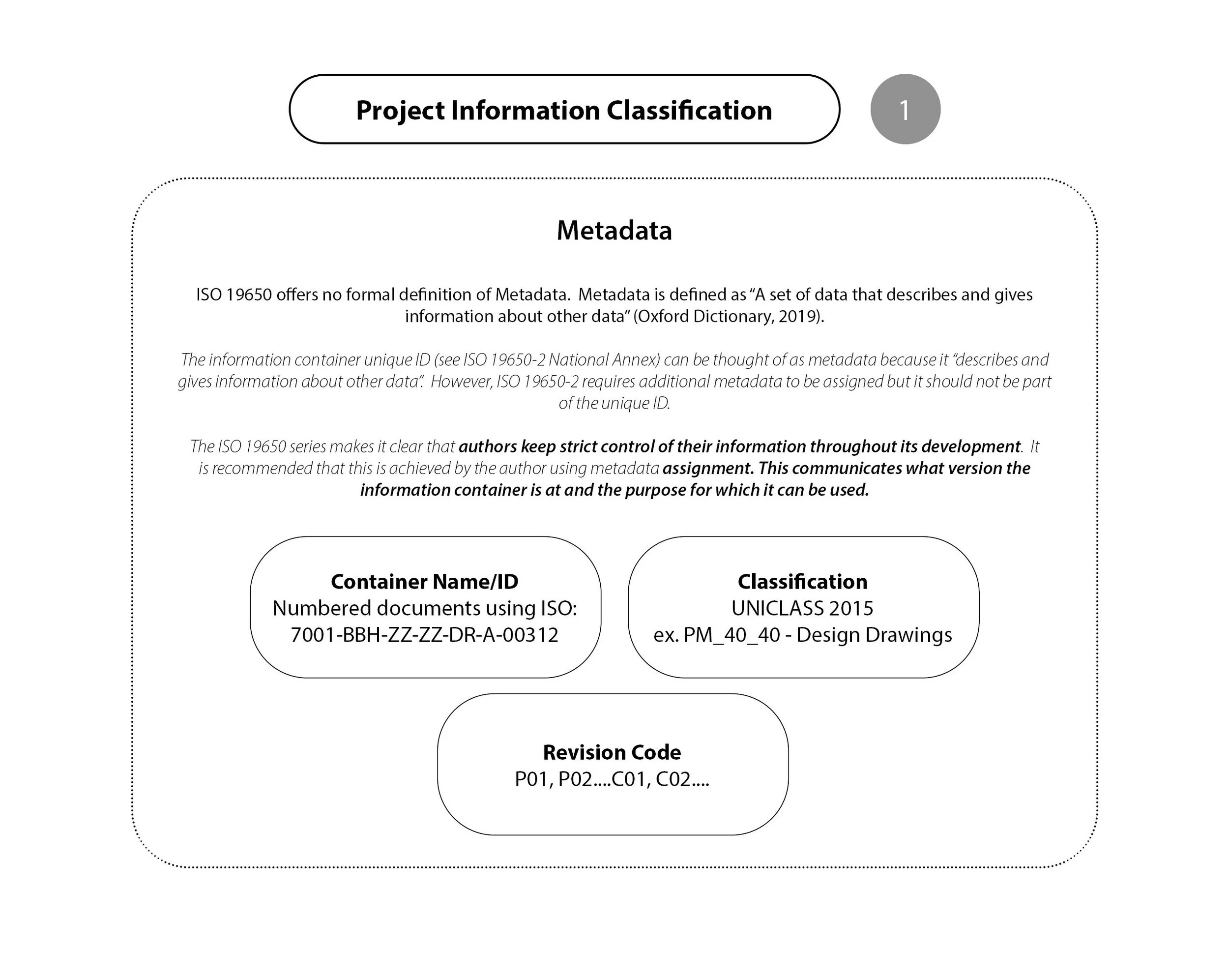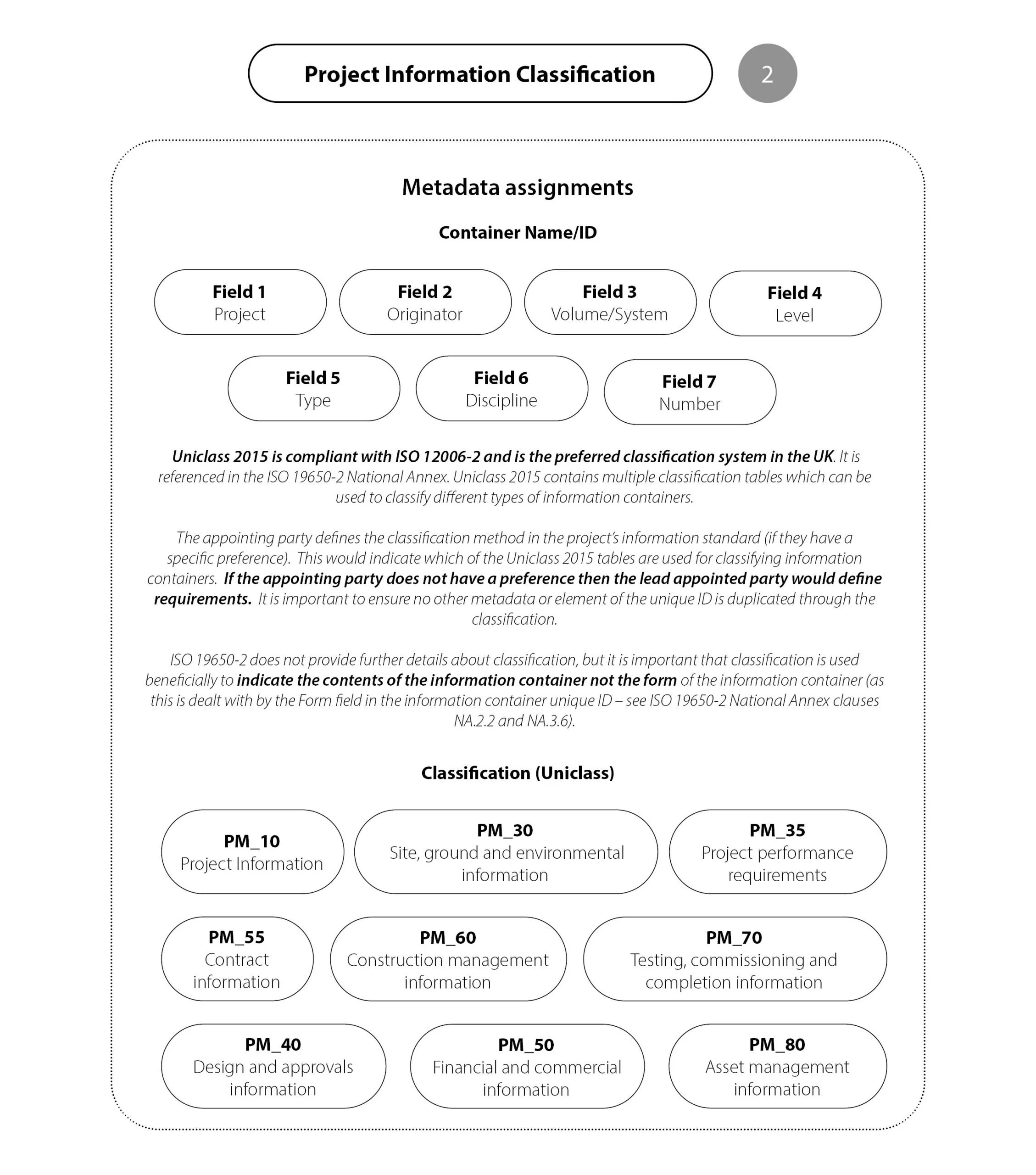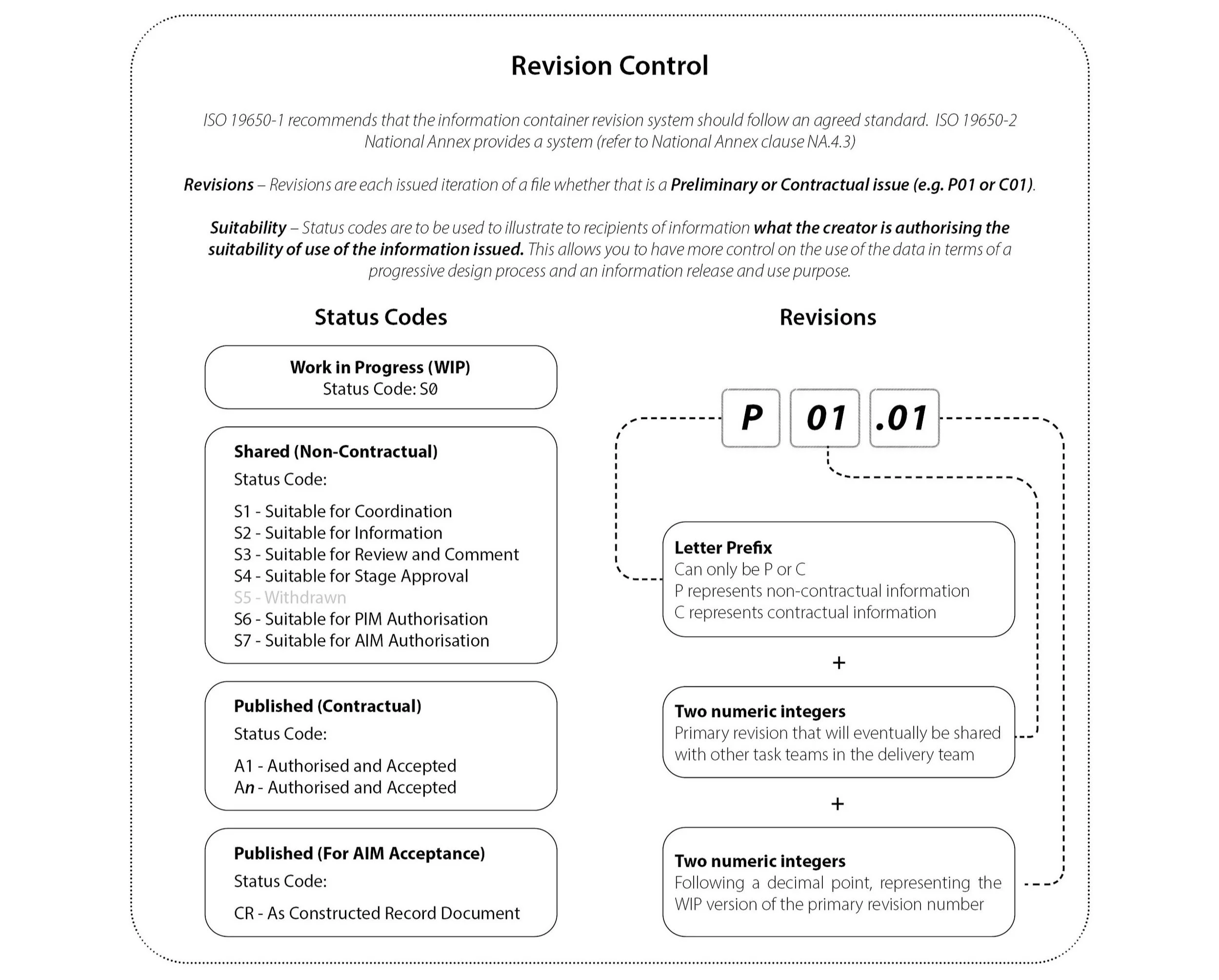Document Numbering
Project Information Classification
A Global standard?
There is no universally agreed convention for numbering construction drawings (but see below for ISO 19650), as different organisations and industries may use different systems depending on their specific needs and requirements. However, there are some common practices that can be useful to follow:
Organize drawings into categories: Divide the drawings into categories, such as architectural, structural, mechanical, electrical, and plumbing. This makes it easier to locate and reference specific drawings and identifies the originator of the information for co-ordination and contractual purposes.
Use a consistent numbering system for each category of drawing, such as A for architectural, S for structural, M for mechanical, E for electrical, and P for plumbing.
Use a sequential numbering system: Number each drawing sequentially within each category.
Include a revision number and date on each drawing to indicate when it was updated or revised.
By following these conventions, you can help ensure that your construction drawings are organised and easy to navigate, which saves time and improves the efficiency of the construction process.
ISO 19650 and Built Assets
There is, however, an ISO 19650 that is a set of international standards that provide a framework for the management of information throughout the lifecycle of a built asset, including buildings and infrastructure. The standard is designed to improve collaboration and communication among stakeholders involved in the design, construction, and maintenance of built assets, with the aim of reducing costs, improving efficiency, and reducing errors.
ISO 19650 consists of two parts: Part 1 provides the concepts and principles for managing information throughout the lifecycle of a built asset, while Part 2 provides guidance for the implementation of information management processes and procedures. The standard covers a wide range of topics, including information requirements, information exchange, information modelling, and information security.
One of the key benefits of ISO 19650 is that it promotes a common language and approach to information management, which can improve communication and collaboration among stakeholders. It also helps to ensure that information is managed in a consistent and structured manner, which can reduce errors and improve the quality of the built asset.
ISO 19650 also promotes the use of digital technologies and processes, which can improve efficiency and reduce costs. For example, the use of digital models and data can help to identify potential clashes and conflicts before construction begins, which can reduce the need for rework and delays. By promoting a common language and approach to information management, and encouraging the use of digital technologies and processes, the standard helps to improve collaboration, reduce errors, and improve the quality and efficiency of the built asset.
ISO 19650 and document numbering
ISO 19650 provides a fully comprehensible document numbering systemISO 19650 provides guidelines for document numbering and identification within the context of information management for built assets. The standard recognizes that document numbering is an important aspect of information management, as it helps to ensure that documents are properly identified and tracked throughout their lifecycle.
According to ISO 19650, document numbering should be consistent and structured, and should follow a standardised format that includes a unique identifier for each document. The unique identifier should be based on a combination of the document type, project number or code, and a sequential number.
ISO 19650 also recommends that document numbers be recorded in a document register or similar database, which should include information such as the document title, author, revision history, and status. This information should be regularly updated to ensure that the document register remains accurate and up-to-date.
By providing guidelines for document numbering and identification, ISO 19650 helps to ensure that documents are properly identified and tracked throughout their lifecycle, which can reduce errors, improve efficiency, and enhance collaboration among stakeholders.
Standard ISO 19650 document number format (9 fields):
Standard fields for document numbering from ISO 19650It is worth noting that BS 1192 2007 +A2 2016 gives details of this as well, the main difference is the restriction to 4 digits for Field 7 and the addition of a Uniclass reference between fields 6 and 7.
Revision Control
ISO 19650 provides for revisions produced internally and those issued external to an organisation as well as status codes which are normally applied within a common data environment (CDE) rather than on a document number itself.
ISO 19650 status codes and revisionsIssues with ISO 19650 document numbering
For larger organisations there are no significant issues with the document numbering system outlined in ISO 19650. In fact, the standard provides clear guidelines for consistent and structured document numbering that can help to improve information management and reduce errors.
However, some organisations may encounter challenges in implementing the document numbering system. For example, some organisations may find it difficult to develop a standardised document numbering system that is appropriate for their specific needs and requirements. Additionally, there may be issues with maintaining consistency in document numbering across different projects and departments within an organisation.
Another potential issue with document numbering is the potential for errors or inconsistencies in the document register or database. If document numbers are not properly recorded or updated, it can lead to confusion, delays, and errors in the management of information.
Overall, the issues with ISO 19650 document numbering are generally related to implementation and consistency, rather than the system itself. By following the guidelines outlined in the standard and implementing a robust document management system such as that provided by Orrekie, organisations can effectively manage their documents and improve collaboration and efficiency among stakeholders.
The standard, however in our view does suffer from two key human interface issues:
The number itself becomes long and overly complicated for human team members to readily remember the number.
Secondly the standard does allow two different documents to share the same “number” (Field 7) within one issuing organisation (albeit with very different prefixes etc) and between organisations. Our advice is always to ensure Field 7 is unique within any single organisation.
In addition to insisting on unique Field 7 number, these issues can be reduced and eliminated by using a modified ISO 19650 system, which is shorter:
PRO_A_3241_A
which uses fields 1, 6,7 and 9 only. And where the number for each originator is required to be unique.
Orrekie supports any document numbering format and thus can be tailored to suit organisational policies as well as project specific requirements.




